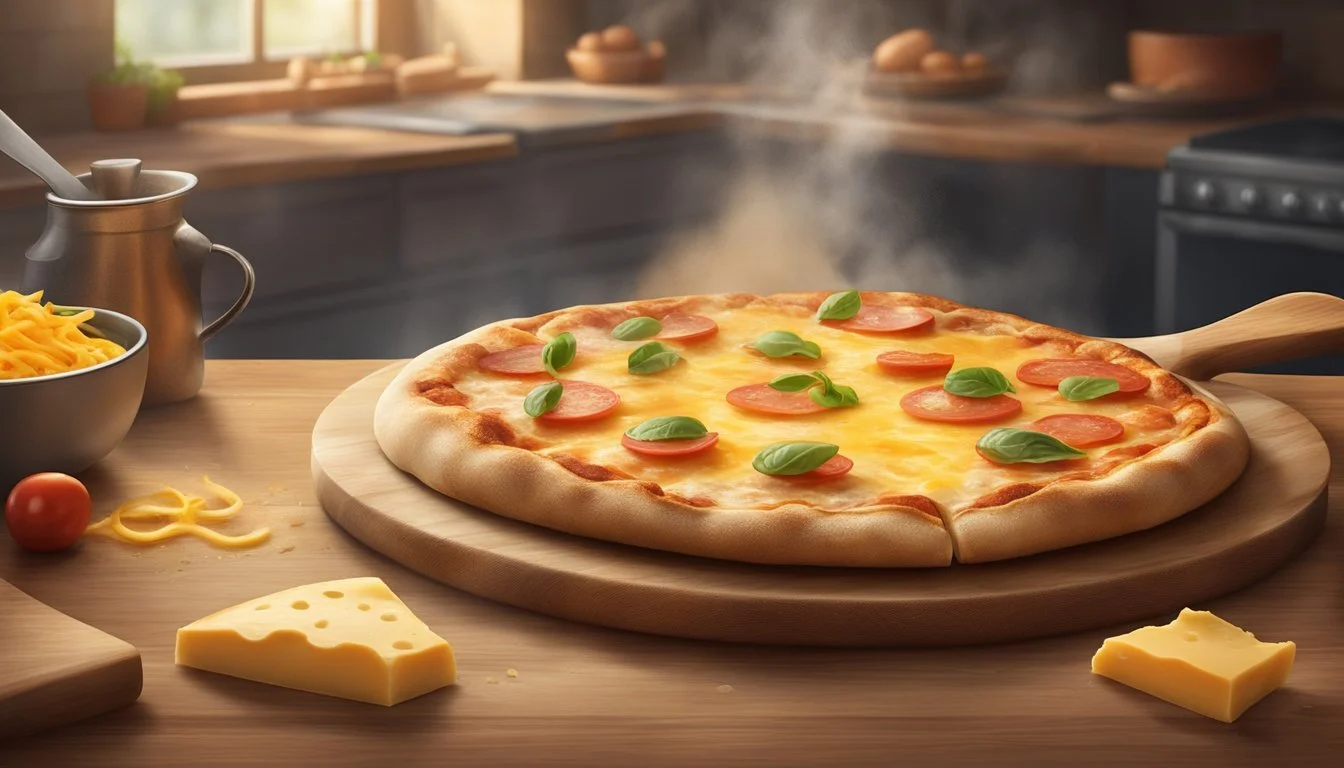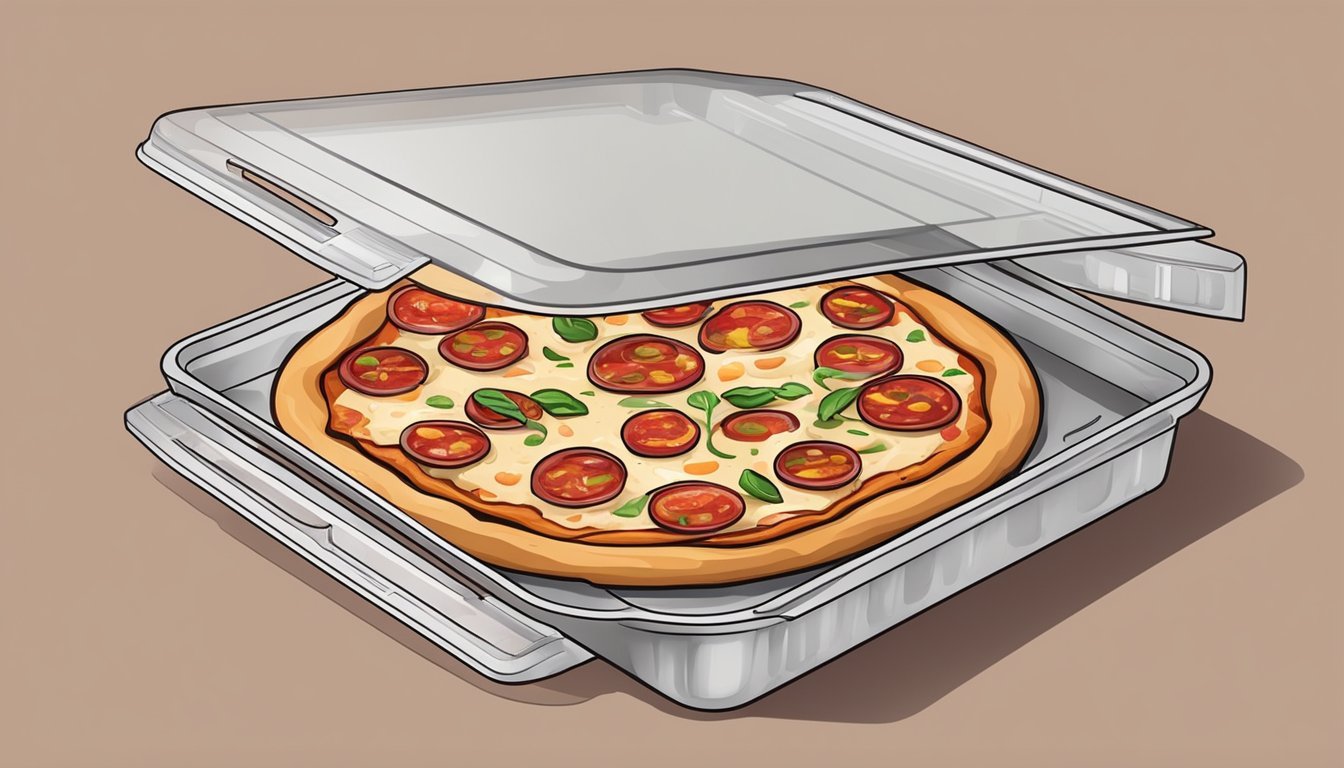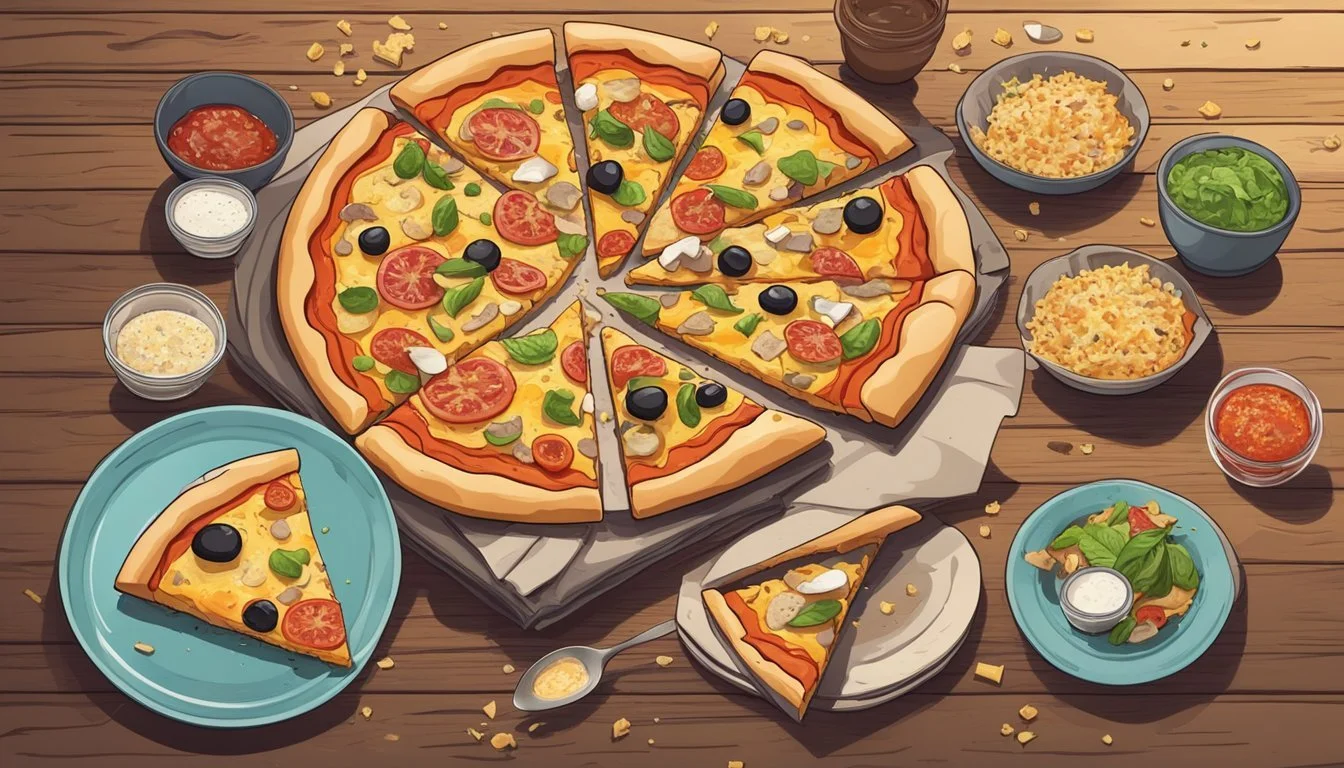How Long Does Fresh Pizza Last?
Shelf Life and Storage Tips
When it comes to keeping pizza (What wine goes well with pizza?) fresh, proper storage is key. Fresh pizza (how long does fresh pizza last?) that is stored in the refrigerator can generally last for up to 3 to 4 days. To maximize freshness and prevent the growth of bacteria, it's crucial to refrigerate pizza within two hours of baking or delivery. Maintaining a cold environment in the fridge below 40°F (4°C) helps to retard bacterial growth and keeps the pizza safe for consumption over several days.
The quality of pizza over time is not just about safety; it's also about texture and flavor. Pizza leftovers stored properly in airtight containers or wrapped tightly to prevent moisture loss can retain a desirable taste and texture. However, after 3 to 4 days in the fridge, pizza typically begins to dry out or become soggy, and the flavors may start to deteriorate. Therefore, for the best dining experience, it's recommended to consume refrigerated pizza within this timeframe.
Understanding Pizza Shelf Life
Proper storage of pizza is crucial to maintaining its freshness and determining how long it remains safe for consumption. Factors such as ingredients, storage methods, and temperature play a pivotal role. Consumers should be vigilant for signs of spoilage, which signal it's time to discard the pizza.
Factors Affecting Freshness
Ingredients: The type of toppings can influence the lifespan of pizza. Meat toppings are prone to faster spoilage due to bacteria, whereas vegetarian pizzas can last slightly longer.
Cheese: Pizzas with fresh mozzarella should be consumed more quickly than those with aged cheeses (What wine goes well with aged cheeses?) like Parmesan, to avoid spoilage due to higher moisture content.
Sauce: Tomato-based sauces (What wine goes well with tomato-based sauces?) with higher acidity may help preserve the pizza, acting as a natural preservative.
Storage Conditions:
Temperature: The pizza should be stored at temperatures below 40°F (4°C) to inhibit bacterial growth.
Containers: An airtight container is essential to maintain freshness and prevent drying out.
Duration: Generally, refrigerated pizza retains its quality for 3-4 days.
Signs of Spoilage
Visual and Olfactory Indicators: Spoiled pizza often presents clear visual cues like:
Mold: Any visible mold growth is an obvious indicator that the pizza is no longer safe to eat.
Discoloration: Significant changes in color can be a sign of spoilage.
Scent: An off or sour smell is a strong indication that the pizza has gone bad and should not be consumed.
Texture: A slimy or overly tough crust may indicate that the pizza has past its prime.
Consumers should trust their senses. If the pizza exhibits any of these spoilage signs, it is best to discard it to avoid any potential foodborne illness.
Proper Storage Methods
The longevity and freshness of pizza depend highly on its storage conditions. To maximize shelf life and maintain taste, it's crucial to understand the different methods for preserving pizza.
Storing Pizza in the Fridge
Refrigerating pizza is the most common method for short-term storage. One should place the pizza in the fridge within two hours of cooking to prevent bacterial growth. The fridge temperature should be kept below 40°F (4°C). It's best to store pizza slices in a single layer to facilitate even cooling and to keep the crust from becoming soggy. Under these conditions, the pizza can remain fresh for consumption for 3 to 4 days.
Freezing Pizza for Longevity
For long-term storage, freezing is the preferred option. Pizza should be wrapped tightly in plastic wrap or aluminum foil before placing it in the freezer, ensuring it is well-sealed to avoid freezer burn. Freezing halted bacterial growth and preserves the pizza up to 2 months. It's important to note that pizza quality may gradually decrease the longer it stays frozen.
Airtight Containers and Wraps
Using airtight containers or wraps is pivotal for maintaining pizza quality. Wrapping pizza slices tightly in aluminum foil, plastic wrap, or placing them in an airtight container helps prevent moisture loss and keeps out odors from other foods. This method not only helps to maintain the taste and texture of the pizza but also extends its freshness whether in the fridge or freezer.
Safety and Health Considerations
When considering the safety and longevity of fresh pizza, one must be vigilant against spoilage and the potential for foodborne illness. Recognizing signs of spoiled pizza is crucial, as is understanding how to prevent the growth of harmful bacteria to ensure the pizza remains safe to eat.
Recognizing Spoiled Pizza
Spoiled pizza often displays changes in color, texture, and smell. One should look out for:
Discoloration: Any unusual spots or mold growth in various colors.
Off smell: A sour or ammonia-like odor that deviates from the normal fresh, yeasty aroma.
Texture: Any slimy or tacky toppings indicate spoilage; the crust should not feel damp or squishy.
Preventing Foodborne Illness
To avert the risk of foodborne illness, one needs to adhere strictly to food safety guidelines:
Temperature control: Keep pizza above 140°F (60°C) when hot or below 40°F (4°C) when refrigerated.
Two-hour rule: At room temperature, consume or refrigerate pizza within two hours.
Refrigeration: Store pizza in the fridge for no more than 3 to 4 days.
Freezing: For longer storage, freeze pizza; it can last 1 to 2 months when properly stored.
Optimizing Freshness and Flavor
To maintain the optimal flavor and texture of fresh pizza, it is essential to store it at the right temperature and reheat it using proper techniques.
Fridge and Freezer Temperatures
Refrigerator Settings: For the best preservation of freshness, pizza should be stored at temperatures below 40°F (4°C). A refrigerator thermometer can ensure that the fridge is operating at the correct temperature to slow bacterial growth and maintain pizza quality.
Optimal Temperature: Maintain your refrigerator at or below the recommended setting.
Thermometer Usage: Place a thermometer inside the refrigerator to regularly monitor temperature settings and make adjustments as necessary.
Reheating Techniques
Reheating for Quality: How one reheats pizza can affect its texture and flavor significantly. Here are the best techniques:
For Oven Reheating:
Preheat the oven to 375°F (190°C).
Place the pizza on a baking sheet for about 10 minutes.
For Microwave Reheating (quicker but may soften the crust):
Use a microwave-safe dish.
Reheat in 30-second intervals to avoid overcooking.
For Stovetop Reheating (to keep the crust crispy):
Heat a skillet on medium-high.
Warm the pizza for a few minutes until the bottom is crispy.
In each method, focus on heating the pizza until it is just warmed through. This will help preserve the flavor and texture without drying out or burning the pizza.
Best Practices for Pizza Lovers
For pizza lovers looking to enjoy their Italian dish over time, selecting proper toppings and employing food preservation techniques are fundamental. These practices ensure flavors remain delicious well beyond the initial bake.
Choosing the Right Toppings for Storage
When it comes to prolonging the life of a pizza, the types of toppings can make a significant difference. They should consider that plain cheese pizzas often last longer than those adorned with meats or seafood, as the latter are more prone to quicker spoilage. Pizza enthusiasts are advised to opt for toppings that are less perishable if they intend to store the pizza for an extended time.
Recommended Toppings for Better Storage:
Vegetables
Hard cheeses
Pepperoni
Toppings to Avoid for Long-Term Storage:
Seafood
Chicken
Excessively watery vegetables like tomatoes
Italian Dish Preservation Tips
Effectively preserving pizza also hinges on how it's stored. It should be placed in the refrigerator at temperatures below 40°F (4°C) and within two hours of cooking to minimize the risk of bacterial growth. For ideal storage, use an airtight container or wrap tightly in plastic to maintain both the quality and moisture of the pizza. Refrigerated pizza can typically last 3 to 4 days.
Storage Tips:
Wrap the slices individually for even cooling.
Store in a single layer to avoid sogginess.
Refrigerate promptly and consume within the recommended timeframe.
A vigilant approach to topping selection and adherence to these preservation strategies can greatly impact the duration and enjoyment of leftover pizza for aficionados of this beloved Italian dish.
Frequently Asked Questions
How long can leftover pizza be kept in the fridge?
Leftover pizza should ideally be consumed within 3-4 days when stored in the refrigerator. It should be kept in an airtight container or tightly wrapped to maintain freshness.
Is it safe to eat pizza that has been left at room temperature?
Pizza should not be left out at room temperature for more than 2 hours. Beyond this, bacteria can grow rapidly, increasing the risk of foodborne illness.
What are the signs of stale pizza?
Stale pizza may have a tough or dried out crust. The flavor might also diminish, and it may lose its original moisture and texture.
Can pizza be frozen to extend its shelf life?
Yes, pizza can be frozen for future consumption. For best results, freeze pizza in airtight containers or wrapped in plastic for 1-2 months to maintain quality.
What is proper storage to avoid slimy texture or moldy pizza?
Proper storage involves refrigerating pizza below 40°F (4°C) and using airtight containers to prevent moisture loss. This helps to prevent a slimy texture and mold growth.
Italics: While these guidelines can help to maintain food safety and taste quality, always inspect pizza for any signs of spoilage, like an off smell, slimy texture, or visible mold before consumption.




